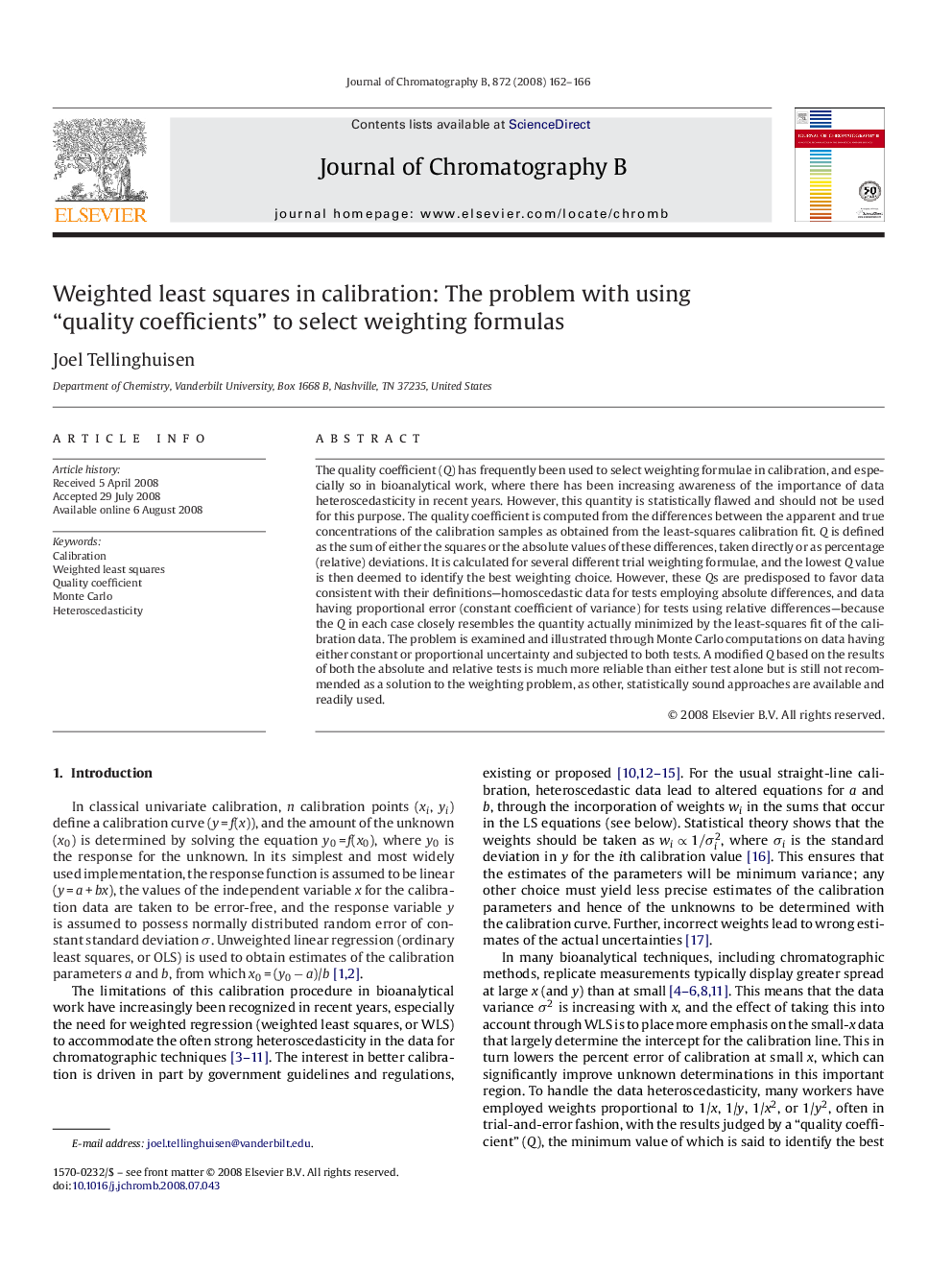| Article ID | Journal | Published Year | Pages | File Type |
|---|---|---|---|---|
| 1215092 | Journal of Chromatography B | 2008 | 5 Pages |
The quality coefficient (Q) has frequently been used to select weighting formulae in calibration, and especially so in bioanalytical work, where there has been increasing awareness of the importance of data heteroscedasticity in recent years. However, this quantity is statistically flawed and should not be used for this purpose. The quality coefficient is computed from the differences between the apparent and true concentrations of the calibration samples as obtained from the least-squares calibration fit. Q is defined as the sum of either the squares or the absolute values of these differences, taken directly or as percentage (relative) deviations. It is calculated for several different trial weighting formulae, and the lowest Q value is then deemed to identify the best weighting choice. However, these Qs are predisposed to favor data consistent with their definitions—homoscedastic data for tests employing absolute differences, and data having proportional error (constant coefficient of variance) for tests using relative differences—because the Q in each case closely resembles the quantity actually minimized by the least-squares fit of the calibration data. The problem is examined and illustrated through Monte Carlo computations on data having either constant or proportional uncertainty and subjected to both tests. A modified Q based on the results of both the absolute and relative tests is much more reliable than either test alone but is still not recommended as a solution to the weighting problem, as other, statistically sound approaches are available and readily used.
